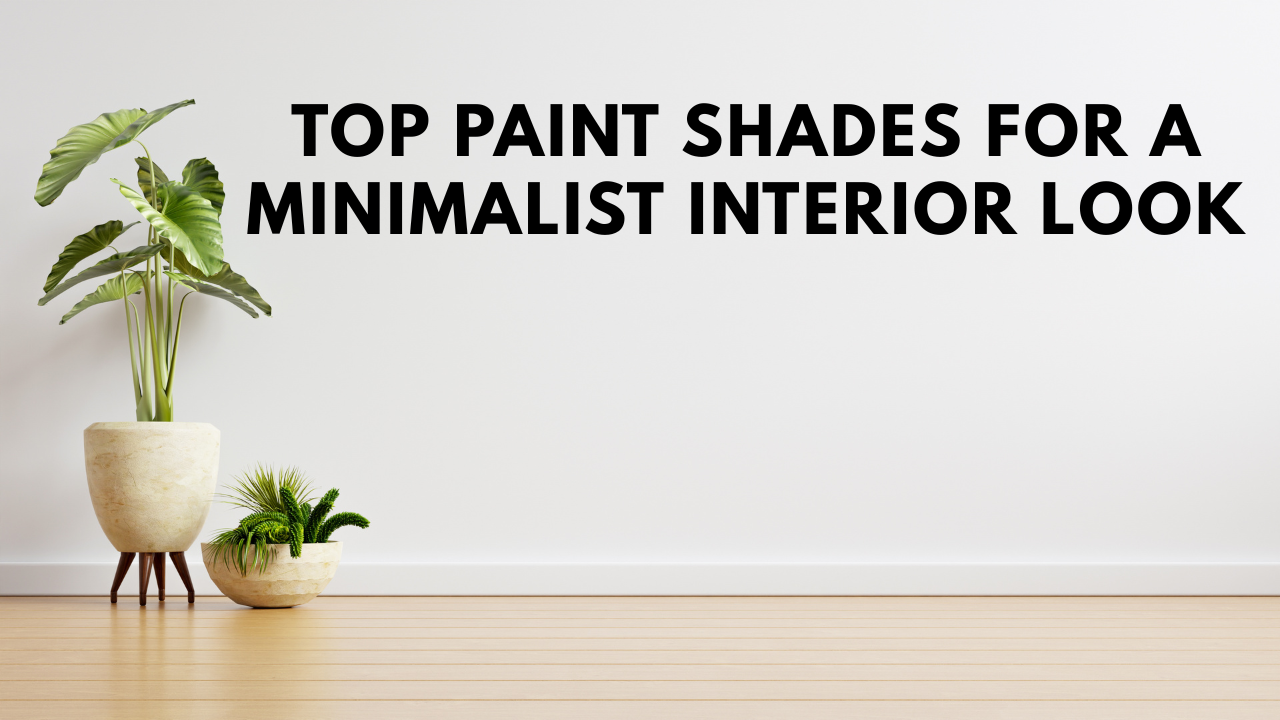Minimalist interiors are all about clarity, calmness, and clean design. But achieving that look isn’t just about removing clutter—it starts with the right paint colors. The perfect minimalist palette sets the tone for your entire space, enhancing natural light, creating flow, and allowing your furniture and textures to shine. Whether you love Nordic simplicity or Japandi serenity, these top paint shades for a minimalist interior will help you build the sleek, timeless aesthetic you’re after.
Overview: Best Minimalist Paint Shades
| Paint Shade Name | Color Type | Visual Effect | Works Best In | Styling Tip |
|---|---|---|---|---|
| Soft White | Warm Neutral | Airy, Open | Any Room | Add contrast with black/wood accents |
| Greige | Grey-Beige Blend | Warm yet modern | Living Room, Bedroom | Perfect with minimalist wood furniture |
| Sage Green | Dusty Green | Calm, Earthy | Office, Kitchen | Pair with natural decor and linen |
| Pale Grey | Cool Neutral | Clean, Contemporary | Bedroom, Bathroom | Use soft textiles for warmth |
| Warm Taupe | Earth Tone | Cozy, Subtle Depth | Dining Room, Hallways | Accents in cream and gold work well |
| Bone Beige | Off-White Beige | Soft, Organic | Living Room, Entryway | Layer with similar neutrals |
| Cloud Blue | Faded Blue | Serene, Light | Bedroom, Study | Use black or navy accents |
| Charcoal | Dark Neutral | Depth, Sophistication | Accent Wall, Media Room | Contrast with light flooring |
1. Soft White – The Minimalist Essential
Soft white is the foundation of almost every minimalist space. Unlike stark white, this warm-toned version creates a welcoming glow while keeping the look clean and crisp.
Best For: All rooms, especially those with limited light
Pairs With: Wood tones, linen curtains, black metal fixtures
Why It Works: Maximizes space and light without feeling sterile
2. Greige – The Ultimate Neutral Hybrid
Greige (a blend of grey and beige) offers the structure of grey with the warmth of beige. It’s incredibly versatile and adds depth without drama.
Best For: Living rooms, bedrooms, and home offices
Pairs With: Light oak, soft black, and stone textures
Why It Works: A balanced backdrop that suits both modern and rustic elements
3. Sage Green – Soft Nature-Inspired Calm
Sage green is a subtle, dusty green that brings peace and an organic touch to interiors. It adds color without overwhelming the space.
Best For: Kitchens, bathrooms, reading corners
Pairs With: White ceramics, bamboo, and earthy textiles
Why It Works: Feels grounded and fresh, perfect for natural minimalism
4. Pale Grey – Light, Cool, and Clean
This understated shade is modern and timeless. Pale grey keeps a space feeling open while offering just enough tone to feel defined.
Best For: Bedrooms, minimalist bathrooms
Pairs With: Concrete finishes, pale wood, glass accents
Why It Works: Perfect for soft contrast in light-filled spaces
5. Warm Taupe – Earthy and Elegant
Warm taupe adds cozy depth to minimalist rooms without overpowering. It’s great for spaces where you want a bit more warmth and sophistication.
Best For: Dining areas, small apartments
Pairs With: Cream upholstery, gold frames, soft lighting
Why It Works: Grounds the room while still feeling neutral
6. Bone Beige – Soft and Organic
Bone beige sits between cream and light tan. It’s a top choice for minimalist interiors that lean toward a Mediterranean or Japanese influence.
Best For: Entryways, living rooms
Pairs With: Woven decor, low furniture, leafy plants
Why It Works: Offers subtle contrast with white trim or ceilings
7. Cloud Blue – A Whisper of Color
For those who want a slight hint of color, cloud blue adds cool, airy energy to a minimalist palette. It creates a peaceful and refreshing backdrop.
Best For: Bedrooms, studies, nurseries
Pairs With: Black fixtures, natural fabrics, white wood
Why It Works: Adds color without taking over the minimalist vibe
8. Charcoal – Bold and Balanced
While minimalism often leans light, a charcoal accent wall can add grounding depth. It’s especially effective in contrast with pale floors and soft lighting.
Best For: Media rooms, behind a TV or bed, modern lofts
Pairs With: Matte black, brushed nickel, warm neutrals
Why It Works: Adds drama without clutter
Minimalist Color Combo Ideas
| Base Shade | Accent Shade | Effect Created |
|---|---|---|
| Soft White | Sage Green | Calm, nature-inspired |
| Pale Grey | Charcoal | Structured, modern |
| Greige | Cloud Blue | Balanced, airy |
| Bone Beige | Warm Taupe | Earthy, layered |
Conclusion
Minimalist interiors are proof that less really is more, and the right paint shades play a huge role in that visual philosophy. Whether you prefer a pure white palette or a subtle earthy mix, these shades create the calm, spacious, and refined atmosphere minimalism is known for. Stick to soft tones, limit bold contrasts, and focus on texture and light. The result? A home that breathes simplicity, peace, and timeless style.
FAQ’s
Q: What’s the best white shade for a minimalist look?
Soft white or bone beige offer warmth without sacrificing simplicity.
Q: Can I use dark colors in a minimalist room?
Yes, charcoal or deep taupe works well as an accent when balanced with light tones.
Q: How many colors should I use in a minimalist space?
Stick to 2–3 harmonious shades to maintain clarity and visual balance.

